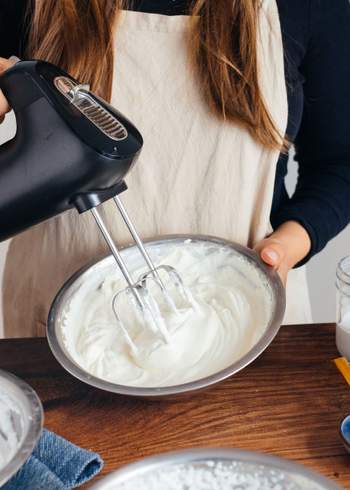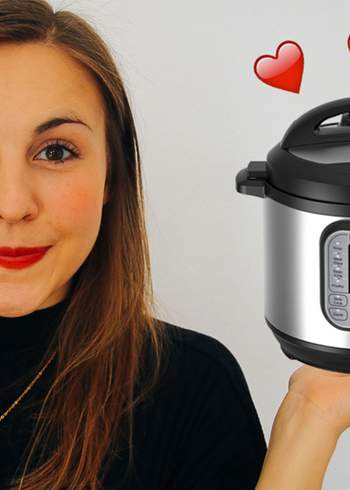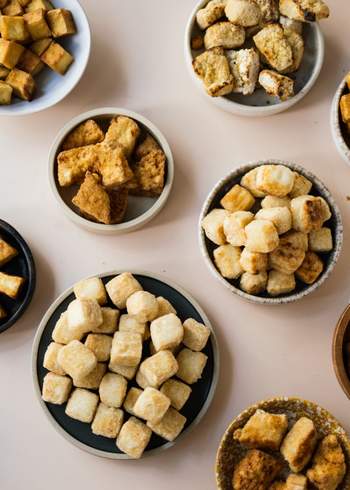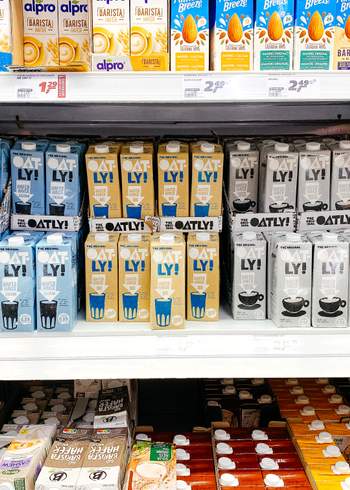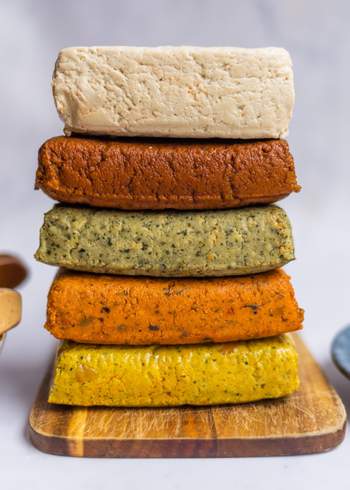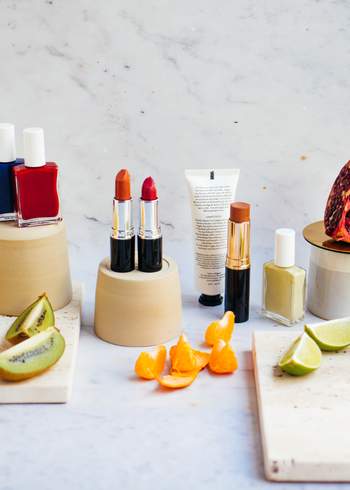
Our Guide to Vegan & Cruelty-Free Clothing
Sometimes it's not all about recipes. From time to time, we also write about the bigger topics such as vegan clothing and cosmetics or wetell you about kitchen appliances we love. That's what "Papperlapapp" is all about. You can read all previous articles here.
As you could see from the headline, this article has nothing to do with food, but it's a topic that we've often addressed and mentioned in the last article about vegan cosmetics: our clothes. Also, we are no professionals in all areas and thought it's time to take a closer look at this topic. If you approach each area of your everyday life step by step, it's not that difficult and doesn't feel like such a huge change, as if you would suddenly change everything overnight. Promise.
So in this article, we want to make this possible next step in your life easier and explain what can be non-vegan about clothing, what you can look for when shopping, and which seals might help you decide. In addition, we would like to list possible alternatives to non-vegan materials. In the end, we'll tell you about our favorite brands that we like to buy.
Just like shopping for cosmetics, we give you a tip to research which clothing brands you identify with and where you can find them before you go shopping. This will make it much easier for you to stroll around the city. It also saves you a lot of time because you don't have to look at your cell phone while shopping and research whether the pants from the store you're standing in front of are vegan or not.

Which materials are not vegan?
Each of you probably knows the typical non-vegan materials, such as leather, down, silk, wool, or fur. After all, these products very obviously come from animals.
Leather is the skin of cows, sheep, or pigs. In the skinning process, the animals are often not adequately anesthetized, so they suffer incredible pain. You should be aware that leather isn't a mere waste product of the meat industry but that animals are kept and killed almost exclusively for leather production. It's similar to the down production. Here, too, feathers are not just a waste product. Feathered animals, such as geese or ducks, have their under feathers, which protect them from heat or cold, torn out while still alive. This process is forbidden in Germany. Actually. During the molt, when feathers are naturally shed from the body, it is permitted to "pull" these loose-fitting feathers from the animals. However, all animals are rarely molting simultaneously, so animal suffering is inevitable. The production of silk is also pure animal cruelty. Silk moths, which are in the pupa phase, are thrown into boiling water so that they do not bite through the silk thread when they hatch, which would result in a loss of quality. You can probably imagine that the extraction of wool and furs is similarly torturous, which is why we will not go into this in detail.

...and what about buttons, glue, and Co?
With the just mentioned products, we are pretty sure you knew that these are not vegan! But now we come to hidden animal products in clothing, where some of you will undoubtedly be baffled! You'll probably feel the same way we did when we found out back in the day that there could be bonemeal in toothpaste...
Let's start with buttons on pants, jackets, shirts, or blouses. These are super often made of horn, bone, or mother of pearl. The latter is the inner layer of the shell of shells. Due to its luster, it is often used in fashion. Horn is mainly obtained from horns or hooves of buffaloes and deer. It's very rich in keratin, consists of dead cells, and is often used because of its stability. The animal products often look confusingly similar to plastics. With mother-of-pearl buttons, you can see if they shimmer in different colors and have wavy lines, then they are usually real. Horn buttons typically have a rougher surface than vegan products, like plastics, metal, or wood. Animal products are also used to dye our clothes nice and colorful. Textile dye is quite often produced from carmine from lice, from indigotin, purple, or bone char from snails. The squid bladder or the red blood cells of vertebrates are also used to produce textile dyes. Unfortunately, the binders contained in textile dyes are also mostly of animal origin. For manufacturers, animal variants are often cheaper than vegan alternatives.
Adhesives for shoes or bags are often made from glutin glue, which can be obtained from animal bones or skins. But casein, a milk protein, is also added to glue production. On jeans that appear at first glance to be vegan, by the way, are so-called patches, which are often made of leather. There are many non-animal alternatives made from faux leather or cardboard labels these days. Keep your eyes open here! Even shells or pearls on garments may well be of animal origin.
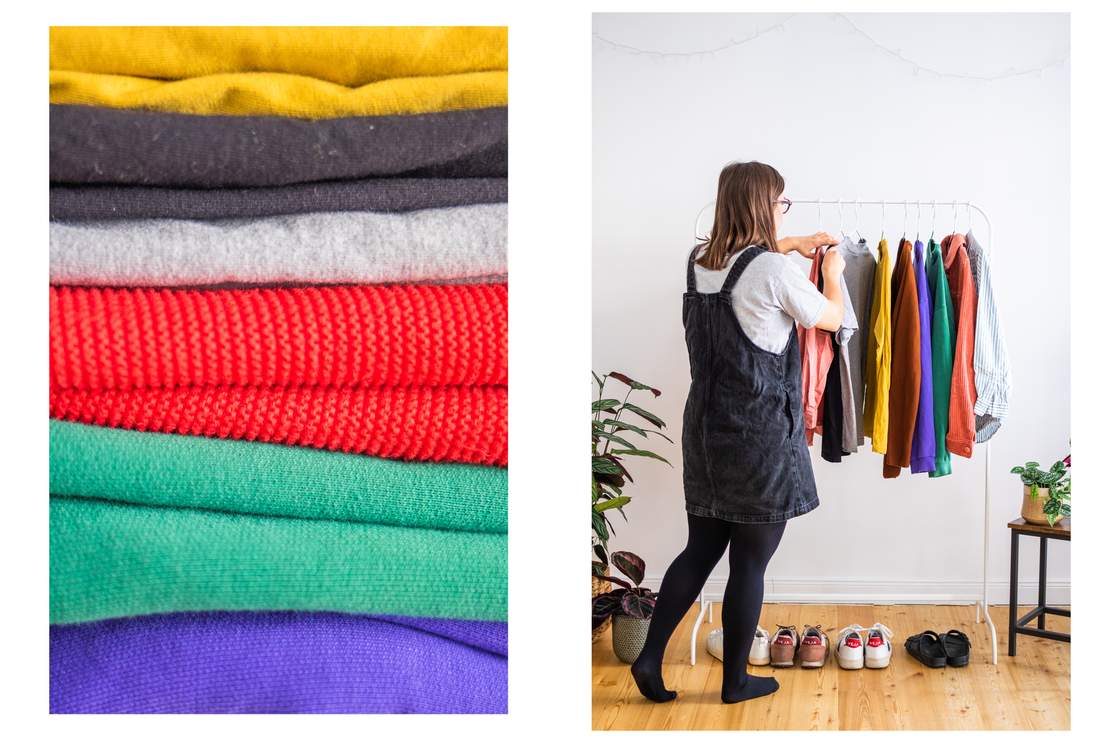
Does animal testing also exist in the textile industry?
Yes, unfortunately. In addition to hidden animal products in our clothing, many garments are tested on animals for compatibility before selling to us customers. There are skin compatibility and allergy tests. Also, there're tests for toxicity, mutagenic, carcinogenic, and abusive properties, and many others. This is associated with a lot of suffering and pain for the animals and ends almost always with death. How exactly all these tests are done, I will spare you, but if you want to know more about this topic, there're some links below that will give you a lot more information.
As we also wrote in the article about vegan cosmetics, animal testing and cruelty to animals are banned in the EU since 2013. For cosmetics, there are stricter rules in the EU than for clothing. Thus, some loopholes can be found here, which make it possible to circumvent the law and still do animal testing.

These seals will help you.
Since we have loaded you with a lot of information, we'll give you a few hints at the end, which will hopefully make shopping for clothes or shoes easier for you.
It's obligatory for manufacturers to label shoes with the materials they are made of. This allows us to see directly (at least from the material) if a shoe is vegan. Why we put brackets is quite simple to explain: If glue is used for shoes, which consists of animal materials, this does NOT have to be labeled. So it's worth asking the retailer directly. That's usually easiest anyway if you're unsure!
"Textile" can be synthetic or natural, and "other" are vegan alternatives like wood or cork. Then there're labels, which should make your search a little easier. Unfortunately, labels have not yet become as typical for clothing as they're for food, where almost everything is labeled "vegan." But there are still a few examples, and we've of course picked them out for you:
On the site of PETA, you can find a long list with brands that have a PETA certification and where you can be sure that no animal had to suffer for the production of these clothes. The vegan seal from TÜV didn't come out until late 2020, so it's not as widely available yet. TÜV checks the chemicals and materials used to make the products and monitors the production to ensure that no animal product is added to the manufacturing process. In addition, of course, there is also the well-known flower of the Vegan Society. This is mainly used for cosmetics and food, but also for clothing. It's often worth taking a quick look at the sewn-in label. If it says something like "Contains non-textile ingredients of animal origin, leather detail, shells, beads, feathers or bones", it is obviously not vegan.

What alternatives are there?
Probably the best-known textile raw material that can be used for vegan clothing is cotton. It comes from a cotton plant, is picked and spun into yarn. But natural fibers made from hemp or linen have also long since ceased to be a rarity. Hemp has the advantage of being very resistant to pests. The plant can protect itself and grows without the use of pesticides or chemical fertilizers. It's the same with linen. They're also completely biodegradable and recyclable.
Nowadays, as I said, many companies are experimenting with new materials for clothing and have already achieved excellent results. For example, there's mushroom or pineapple leather, soy silk, or algae foam. Even orange peels can be used to make clothes these days. Isn't it crazy?

These are brands we like to wear!
As already mentioned, various lists on the Internet summarize all the vegan brands. Nevertheless, we thought about what our favorite vegan brands are, and of course, we wrote them down for you. We love Armed Angels, Unknown Basics, Embassy of Bricks & Logs, and Langerchen. On Loveco's website, many different vegan brands are represented, and additionally, many details about the materials are given. We like that! For shoes, we really like Veja and Womsh, even if this brand is not 100% vegan!
Last but not least...
As you can see, vegan clothing isn't that easy when you go shopping unprepared. Often, manufacturers don't give us an accurate insight into the production, the materials, or the textile dyes they use.
But you know what's really, really great? The fashion industry is developing extremely because more and more people are thinking about it. Thus, more and more vegan clothing is offered. Of course, we think that's great!
As said at the beginning of the article, it doesn't mean for you that you should buy ONLY vegan clothes from now on. Look at it as a process and always take a small step when you feel like it. Because you know: Every step counts!
Sources:
https://ethikguide.org/infothek/tierversuche-fuer-mode/
https://utopia.de/ratgeber/vegane-kleidung-mode/
https://utopia.de/ratgeber/tierversuche-so-ist-die-rechtliche-situation-in-deutschland/
https://proveg.com/de/pflanzlicher-lebensstil/vegane-kleidung/
https://www.peta.de/veganleben/vegane-kleidung/
https://www.peta.de/themen/hintergrundwissen-leder/
https://proveg.com/de/pflanzlicher-lebensstil/vegane-kleidung/
https://www.peta.de/presse/mode-ohne-tierleid-peta-experte-informiert-ueber-die-fuenf-haeufigsten/
https://www.tuv.com/germany/de/bekleidung-und-textilien.html
